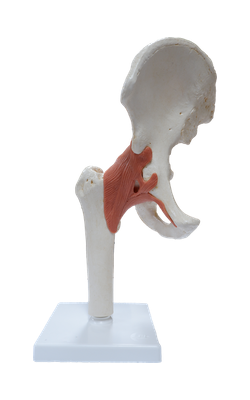Main Model

Iliac bone

The ilium forms the largest part of the hip bone and contributes the superior part of the acetabulum. The ilium has thick medial portions (columns) for weight bearing and thin, wing-like, posterolateral portions, the alae (Latin wings), that provide broad surfaces for the fleshy attachment of muscles.
The body of the ilium joins the pubis and ischium to form the acetabulum. Anteriorly, the ilium has stout anterior superior and anterior inferior iliac spines that provide attachment for ligaments and tendons of lower limb muscles.
Beginning at the anterior superior iliac spine (ASIS), the long curved and thickened superior border of the ala of the ilium, the iliac crest, extends posteriorly, terminating at the posterior superior iliac spine (PSIS). The crest serves as a protective “bumper” and is an important site of aponeurotic attachment for thin, sheet-like muscles and deep fascia. A prominence on the external lip of the crest, the tubercle of the iliac crest (iliac tubercle), lies 5-6 cm posterior to the ASIS. The posterior inferior iliac spine marks the superior end of the greater sciatic notch.
The lateral surface of the ala of the ilium has three rough curved lines - the posterior, anterior, and inferior gluteal lines - that demarcate the proximal attachments of the three large gluteal muscles (plural, glutei). Medially, each ala has a large, smooth depression, the iliac fossa, that provides proximal attachment for the iliacus muscle. The bone forming the superior part of this fossa may become thin and translucent, especially in older women with osteoporosis.
Posteriorly, the medial aspect of the ilium has a rough, ear-shaped articular area called the auricular surface (Latin auricula, a little ear), and an even rougher iliac tuberosity superior to it for synovial and syndesmotic articulation with the reciprocal surfaces of the sacrum at the sacro-iliac joint.